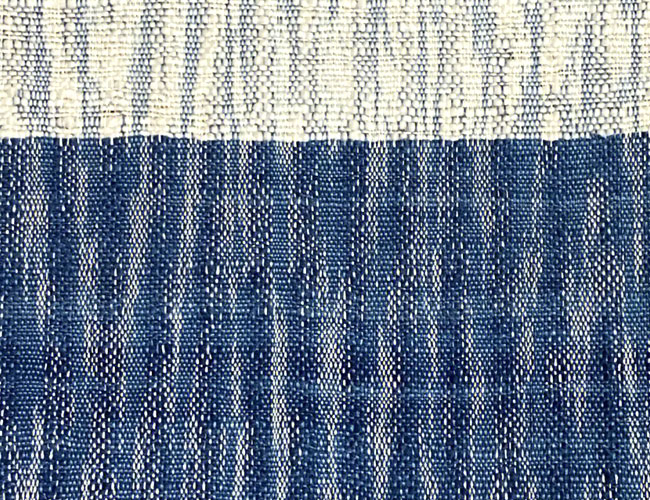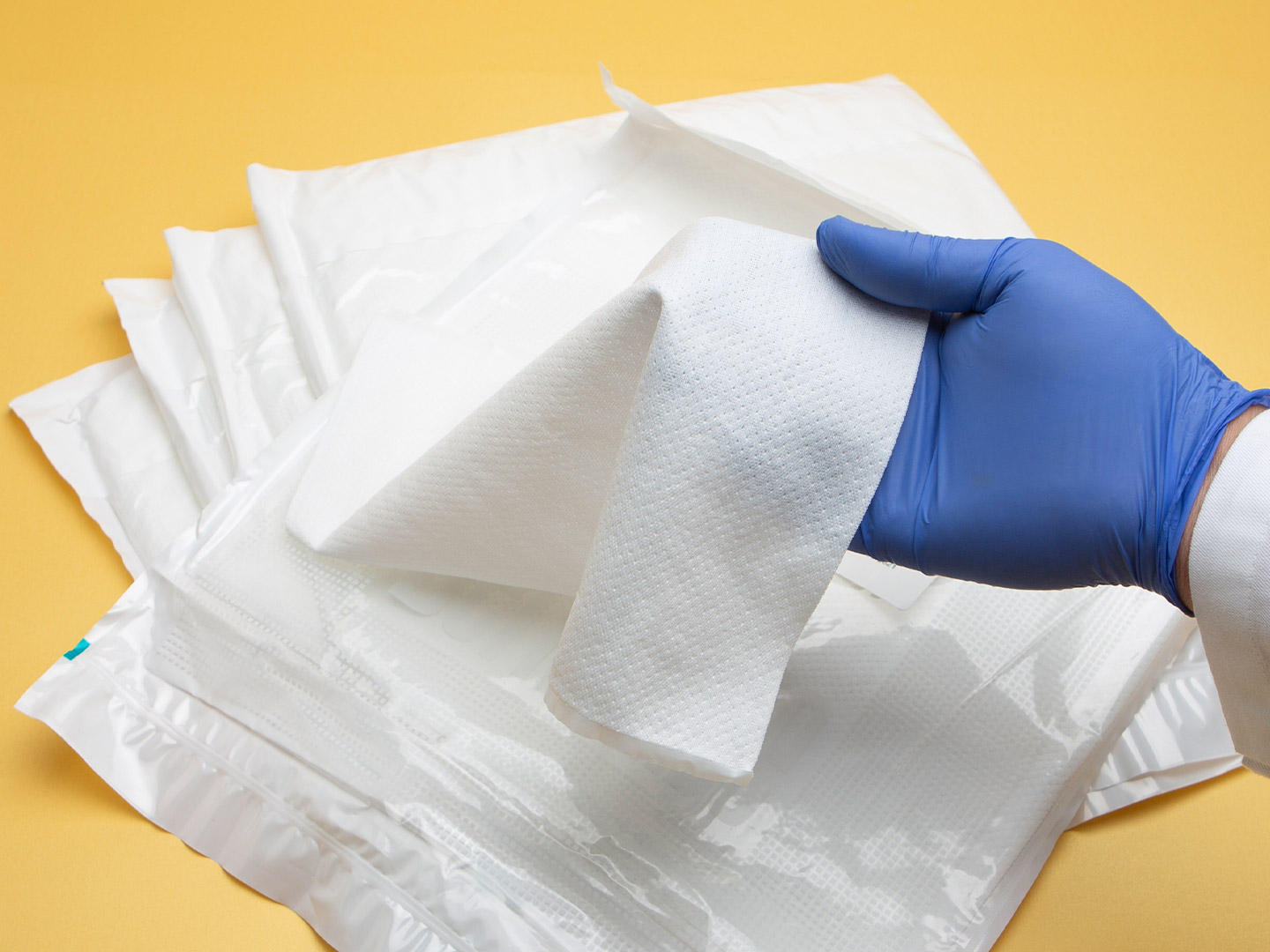
Ikat Fabric is a fabric in which a bundle of threads is systematically tied and dyed by hand in certain parts, and after dyeing, the Ikat knots are disassembled and turned into different colored Ikat threads, and the Ikat threads are adjusted according to the original design to form the Ikat fabric.
It was originally the Malay name for the tied and dyed fabric, but later this name was accepted internationally, and ikat not only represents this type of fabric but also represents the weaving technique of tying and dyeing the pattern first and then finishing the warp to the flower.
Ikat Fabric is called "絣織"("絣织") in Chinese, and the pinyin is 「bēng zhī」.
Ikat Fabric is pronounced 「kasuri」 in Japanese.
Ikat Fabric is called “Asab” in Arabic.
Ikat Fabric is called "Patola" in North India.
Ikat Fabric is called "Endek" and "Gerinsing" in Bali, Indonesia.
The term "ikat" has Indonesian and Malay origin, and it was introduced into European textile vocabulary back in the early 20th century, when Dutch scholars begin to study the rich textile traditions of the Dutch East Indies archipelago (present-day Indonesia).
Some parts of Asia demonstrate strong ikat traditions which suggest its possible origin; whether they are Maritime Southeast Asia (Dutch East Indies archipelago), the Indian subcontinent and Central Asia. However, it probably developed in several different locations independently.
Uyghurs call it atlas (IPA [ɛtlɛs]) and use it only for woman's clothing. The historical record indicates that there were 27 types of atlas during Qing Chinese occupation. Now there are only four types of Uyghur atlas remaining: qara-atlas, a black ikat used for older women's clothing; khoja'e-atlas, a yellow, blue, or purple ikat used for married women; qizil-atlas, a red ikat used for girls; and Yarkent-atlas, a khan or royal atlas.
Yarkent-atlas has more diverse styles; during the Yarkent Khanate (1514–1705), there were ten different styles of Yarkent-atlas.
Source: https://en.wikipedia.org/wiki/Ikat#History
1. Wrap the dyeing thread on the frame;
2. Tie the thread to prevent dyeing as required by the pattern;
3. Finish the dyeing line of the tie flower;
4. Partial application of dyeing brush;
5. Disassemble the threads;
6. Drying the threads and weaving them on the machine;
7. Finished weaving of various kinds of ikat fabrics;
The woven fabrics made by this technique are considered to be noble, and the wearing of ikat is considered to have sacred power.
From birth to death, the ikat has its own style and expression in each stage of life rituals. The finished product is similar to the broccoli kapu of the Tujia family in China.

Batik and ikat are both common textile dyeing techniques, but there are significant differences between them. Here are the specific differences between them.
Batik is an ancient dyeing technique that creates unique patterns and designs by applying wax to a fabric and then soaking it in the dye so that the wax-coated part is unaffected by the dye. Batik can use different colors of dyes and different wax application techniques to achieve a wide variety of effects. Batik can be applied to a variety of fabrics, such as cotton, silk, and wool fabrics. Batik is durable and stable, so it is often used for textile decoration and artistic design.
Ikat is a South American dyeing technique that uses natural plant dyes and hand-woven wool to create fabrics with unique patterns and colors. Ikat fabrics are often considered a cultural heritage because their designs can reflect the patterns and colors of local cultures and traditions. The dyes used in Ikat fabrics come from natural plants such as blueberry, acacia and garcinia, which create very vibrant colors in the fabric. Ikat fabrics are usually hand-woven, so each fabric is unique.
The main difference between batik and ikat lies in their dyes and dyeing techniques. Batik uses artificial dyes and wax application techniques, while ikat uses natural vegetable dyes and hand-weaving techniques. Batik can be applied to a variety of fabrics, while ikat is usually used for wool fabrics. Batik allows for a wide variety of patterns and designs, while ikat is more concerned with the expression of color and texture. In addition, both batik and ikat are textile dyeing techniques with cultural and historical backgrounds, and they both have artistic and cultural value.

Ikat is a dyeing method used for patterning textiles. It uses another technique called resist dyeing on the yarn before the fabric is dyed and woven. One of the most striking and impressive aesthetics surrounding this Ikat pattern is the ambiguity of the design itself, which is why it is so sought after by textile collectors.
It is vital to understand the technical skills required to create these patterns and fabrics. In dyeing methods, resist refers to the method of preventing the dye from reaching specific areas of the fabric to create specific patterns and textures. This resist is applied by using bundles of yarns or individual yarns tied together, wrapped strongly, and then applied to the yarn to achieve the desired pattern.
These yarns are then dyed on top of each other. In some cases, these bundles of yarns may be altered to achieve new patterns before the yarns are dyed a different color. Craftsmans repeat this method countless times to achieve the unparalleled multicolor texture that is the famous brocade pattern. When the dyeing is complete, all the bindings are removed as the yarn is woven into the cloth.
Nowadays, there are also other dyeing methods involving this resist technique.
With batik (wax resist dyeing, applied to the whole cloth) and tie-dye (a 1960s term referring to the ancient resist dyeing method), the resist is applied directly to the woven cloth. In contrast, in Ikat, the resist is applied directly to the yarn before it is woven into the cloth.
It is important to remember that in any design, the surface of both fabrics will be coated with dye, as the decorative art on the surface is created on the yarn, not on the finished fabric.
Thank you for your interest in us G&F GROUP INC.! As a professional fabric manufacturer, our products not only include ikat fabric, but also interlining fabric and non-woven fabric as our core products, which have excellent quality and performance and are widely used in garment, household, and other fields. If you are interested in our products, please feel free to contact us, we will provide you with the best service and products, and look forward to cooperating with you!
All Rights Reserved: https://www.groupgf.com/info-detail/ikat-fabric
Copyright Notice: This is an original (translated) article from G&F Group Inc., please indicate the source from G&F GROUP INC... If there is any infringement, please contact us first.
 Nonwovens in daily life ----- automotive
Nonwovens in daily life ----- automotive
 What is SAP – superabsorbent polymers
What is SAP – superabsorbent polymers
 The Future of Global Nonwoven Wipes to 2029
The Future of Global Nonwoven Wipes to 2029
 C.K. Wong, Nonwovens Industry Pioneer, Passes Away in Hong Kong
C.K. Wong, Nonwovens Industry Pioneer, Passes Away in Hong Kong